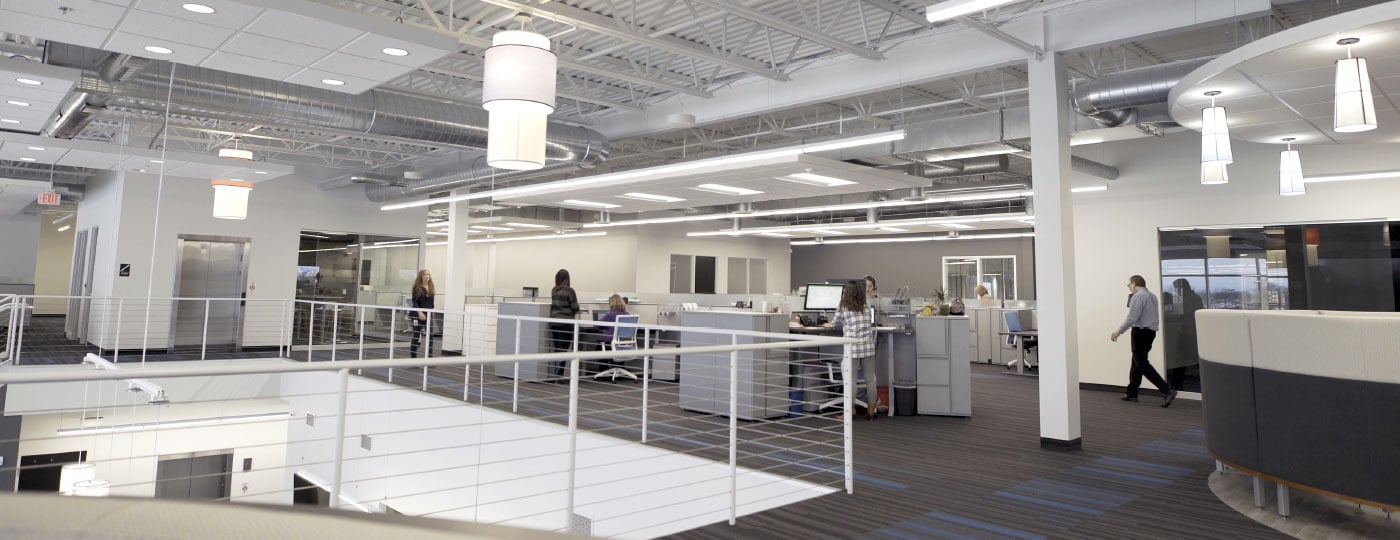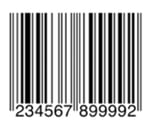

At Streamworks, we use 2D barcode technology in many of our processes.
For example, our intelligent inserting uses 2D barcodes to make sure only the right inserts go in the right envelopes. We print 2D barcodes on each component of your mail piece so it’s accurate and 100% matched and verified.
We like to say no mail piece gets left behind.
What is 2D barcoding exactly? What’s behind the technology and what are the benefits? Lastly, how does 2D barcoding help you with your direct mail campaigns?
Let’s break it down in this article. You’ll learn what 2D barcoding is, how it’s different from the barcodes you see on your groceries, and how it can help your business.
When you think of the traditional barcode used at the grocery store or for tracking your packages, you’re picturing a 1D barcode.
It's the most basic type of code and they’ve been around since their patent in the 1940s.
They’re called "1D" because they store information in one-dimension horizontally across the code in one direction. For example, here’s a 1D UPC barcode:

There are many different forms of the 1D barcode, and the UPC above is the most recognized, with its zebra-like pattern and numbers across the bottom. Special barcode scanners read the stripes and spaces to provide quick information or database input/output.
1D barcodes are widely used with good reason. They have a few specific advantages like:
Although the 1D barcode can store valuable information (like numeric product codes), the dataset is small when compared to its newer big brother, the 2D barcode.
Have you noticed the odd-looking black-and-white square symbols on your mail and bills? Some say they resemble a miniature crossword puzzle.
Those are the two-dimensional, or “2D” barcodes.
The code consists of black-and-white nodes uniquely arranged in a small square pattern. The amount of nodes varies depending on the amount of data encoded in the pattern: the more information, the more nodes.
Like the 1D barcode, they store information and are readable by special scanners and cameras. Unlike the 1D code, 2D codes store information in two dimensions, both horizontally and vertically. That means they can store an impressive amount of useful information such as:
One 2D code, for example, the Data Matrix, can store 2,335 alphanumeric characters compared to 1D's 8-25 characters. Here’s an example of a Data Matrix code:

We've already talked about the main advantage 2D barcodes have over 1D codes: the increased data. What are some other benefits and advantages?
For one, 2D barcodes have fewer errors.
Remember, 2D barcodes store data in two-dimensions (horizontally + vertically). 1D barcodes only store data in one-dimension (horizontally). 2D barcodes use Reed-Solomon error correction algorithms, which in layman’s terms means they can be designed with different levels of error correction—even in cases of damaged barcodes. 2D Barcodes can be designed with four levels of error correction—from Low (7% restoration) to High (30% correction)—although some information storage capacity will be sacrificed at higher correction levels.
With a 1D barcode, if the code gets damaged, the scanner won't be able to read the code, resulting in lost data.
2D barcodes also have the advantage of being easier to read. They can be accurately read at high speed, which makes them ideal for commercial printing, direct mail, and manufacturing.
Did you know that the camera in every smartphone is capable of reading and translating 2D barcodes? This makes them great for marketing campaigns, advertising, and social media. If you decide to scan a barcode with your phone camera, make sure you trust the source. Most users aren't aware that 2D barcodes can be malicious. Be on the lookout for attackers using 2D codes to trick you with phishing, malicious software, and infected websites.
Still, along with the reliability, 2D barcodes are more secure than 1D barcodes, and information stored in the 2D system can be encrypted.
Streamworks uses 2D barcoding with our Intelligent Inserting and Camera Match technology. We ensure the right inserts pair correctly with the matching envelopes and that no mail piece is left behind. Our machines use an innovative camera system to detect missing components, doubles, and matching errors in real-time. Mistakes are caught and corrected instantly, so you get peace of mind that your most critical documents are being handled properly, without error.
2D barcoding has many advantages over 1D barcoding including the amount of data storage, redundancy, resiliency, error-checking, and security.
The code has far-reaching uses across many industries, including print, manufacturing, automotive, marketing, and advertising.
Want to discover how our 2D barcoding technology can help your business? Streamworks has state-of-the-art production equipment with the ability to record and verify every piece of secure mail you process. We show you how in our Verifiable Mail Technology video.

(800) 328-5680
3640 Pheasant Ridge Drive NE • Blaine, Minnesota 55449
Copyright ©2014 Streamworks, LLC. All rights reserved. Privacy Policy